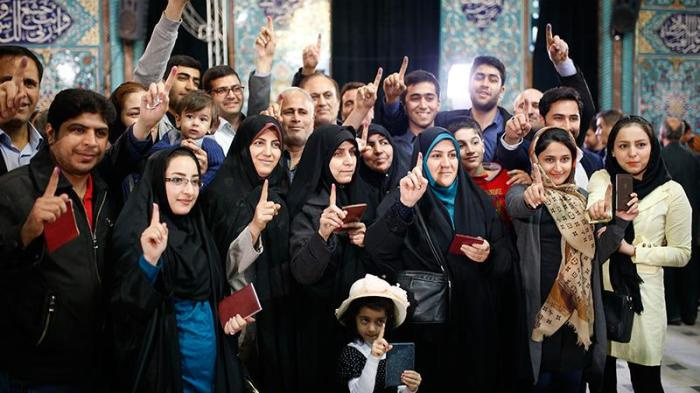Ten Significant Points on the Iran Elections

The combined elections for the parliament (Majlis) and the Expert Assembly in Iran transpired in an orderly and stable environment for the participation of millions of voters across the country. This was the first time that these two elections happened at the same time and it is fair to conclude that this was a time and energy-saving development that can perhaps be contemplated for the future elections.
Although a final analysis of these elections' outcome must await the result of the second round for Majlis seats, scheduled for sometime in late March, early April, nonetheless it is possible to draw some tentative conclusions, in terms of their overall significance, which are as follows:
First, these were pluralistic and competitive elections that reinforced the image of Iran as a country imbued with democratic qualities and thus serve to debunk the Islamophobic discourses that portray Islam and democracy as incompatible.
Second, the landslide victory of reformists in Tehran and their impressive gains in both assemblies reflects a political realignment that on the whole is beneficial to the Rouhani government and its domestic and foreign priorities. A de facto alliance of the reformists and the pro-government moderates can be detected in the electoral process that is likely to impact the legislative behavior during the next four years. As such, the Majlis elections can be fairly interpreted as a vote of confidence in the Rouhani administration.
Third, despite the fact that 8 out of the 9 female incumbents were defeated, the related news that the number of female deputies has at least doubled, pending the outcome of the second round where several females are competing, is another welcome development that indicates the emergence and increasing weight of female voters as an important political variable.
Fourth, the parliamentary results show impressive gains by the so-called independents, whose precise political orientations are for the most part unclear at this point and, therefore, represent the big unknown requiring the passage of time before we can ascertain their significance. At the same time, the independents' electoral victories represents a mixed blessing for the performance of Majlis, which requires unity of will in order to function in an optimal fashion with respect to its legislative and oversight duties.
Fifth, the absence of any complaints of voter fraud is also significant and exonerates the defenders of the present electoral system, who argue that it is adequately monitored and entails the mobilization of some one million Iranians to conduct the process in both urban and rural areas.
Sixth, the Majlis elections once again showed the huge disparity among the provinces in terms of distribution of seats, as a result of which provinces such as Qom, Ghazvin, Tehran and Alborz lack adequate representation. To elaborate, whereas in the Alborz province, there is one candidate per each half million citizens, in Semnan it is one candidate per 124000 eligible voters. A prudent solution is to close such disparities by imposing a uniform standard, whereby the number of seats allocated to the above-said provinces can be fairly adjusted.
Seventh, these elections are also important barometers for the proposed ideas for a comprehensive election law, which have been floating for sometime without serious follow-up. Thus, for example, the pros and cons of the short campaign duration (of one week) should be closely scrutinized and, if need be, followed with concrete proposals to lengthen the time allotted for campaigning. As is, one week is too brief a time for the voters to get familiarized with the slew of candidates and then make informed choices. A three day to one week extension of the campaign duration is logical.
Eighth, these elections were impressive in terms of high voter turnout (of roughly %62) and certainly re-confirm the healthy and vibrant political process, but at the same time the mere fact that the voter turnout in the capital city of Tehran was around %50 is a cause for minor concern, particularly in light of the reports that the absentee voters were mostly from the working class neighborhoods. There is a problem of "voter alienation" that might be economically-related and requires close scrutiny by the government in order to remedy it in the future, instead of ignoring it which might lead to a more pronounced problem in the future.
Ninth, once again the Majlis elections showed the consistent rotation of lawmakers and the anti-incumbency mood of the electorate, as a result of which some two thirds of incumbents in the ninth Majlis were replaced with new faces. On the one hand, this can help create a more vibrant Majlis and, yet on the other hand, can also add to the body's inefficiency given the removal of experienced incumbents, the novice lawmakers, and the discontinuity in the legislative process introduced by a high rate of turnovers. The question of why are the incumbents in Majlis so vulnerable to defeat is in fact a complex issue that contains important lessons for the lawmakers.
Finally, tenth, these elections are also significant because of their implications for the next presidential elections two years away. For both the incumbent President Rouhani and his future competitors, these elections are instructive in terms of gauging the national political mood and the shifting voter behavior.
Kaveh L. Afrasiabi, Ph.D. is an Iranian-American political scientist and author specializing in Iran’s foreign and nuclear affairs, and author of several books.

